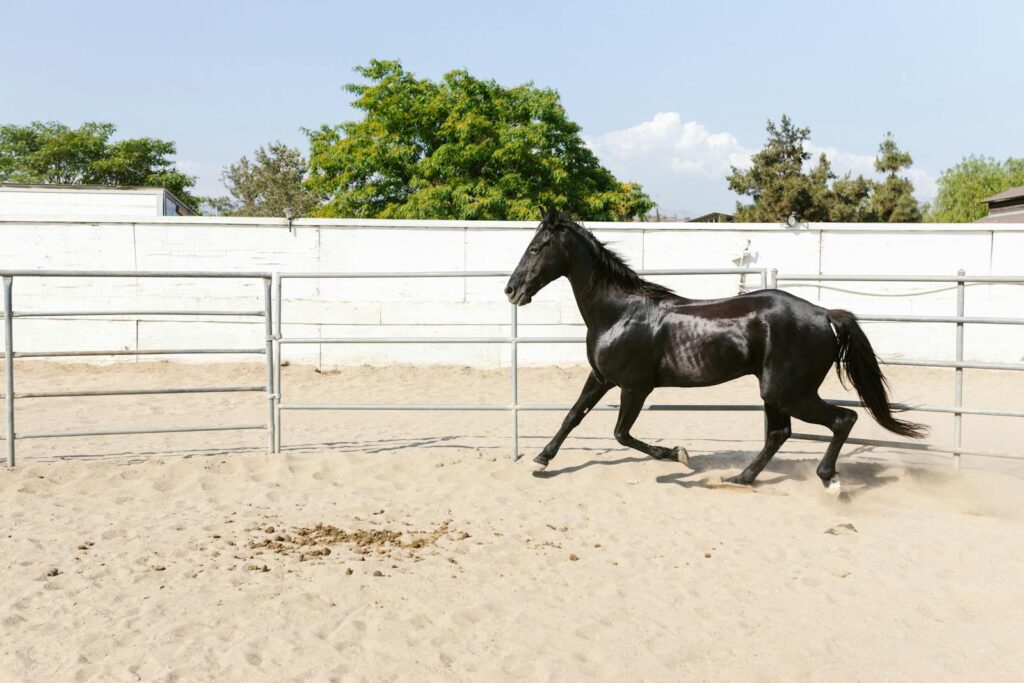Every year, millions of runners commit themselves to the ultimate physical challenge of training for and finishing endurance races like marathons, ultramarathons, and triathlons. These events demand not just physical prowess but also mental fortitude and strategic preparation. Building sufficient stamina for such races doesn’t happen overnight—it requires dedication, smart training, and understanding how your body responds to extended periods of exertion. Whether you’re training for your first marathon or looking to improve your ultramarathon performance, developing the endurance needed to cross that finish line starts with building a solid foundation and gradually increasing your capacity. This comprehensive guide will walk you through proven methods to build the stamina required for conquering long-distance endurance events.
Understanding Stamina vs. Endurance

Before diving into training methods, it’s important to understand what stamina actually is and how it differs from endurance. Stamina refers to your body’s ability to sustain physical activity at maximum capacity for extended periods, often associated with higher-intensity efforts. Endurance, meanwhile, relates to how long you can perform an activity regardless of the intensity level. For long-distance races, you need both: the endurance to keep moving for hours and the stamina to maintain a decent pace throughout. Your cardiovascular system, muscular endurance, energy systems, and mental resilience all play crucial roles in developing both these qualities. Training all these components systematically is essential for anyone seeking to complete challenging distance events successfully.
Start with a Solid Base

Building stamina begins with establishing a strong foundation of general fitness before adding specialized training. This base-building period typically lasts 8-12 weeks and focuses on consistent, easy-to-moderate effort activities that gradually increase in duration. During this phase, prioritize accumulating time on your feet (for runners) or in the saddle (for cyclists) rather than focusing on speed or intensity. Start with 3-4 sessions weekly of 20-30 minutes each, then gradually increase by no more than 10% weekly until you’re comfortably handling 45-60 minute sessions. This gradual approach develops capillary density, mitochondrial function, and basic muscular endurance while minimizing injury risk. Remember that consistency matters more than occasional heroic workouts—your base should be built on regular, manageable training sessions that leave you feeling refreshed rather than depleted.
Implement Progressive Long Sessions

The cornerstone of endurance training is the weekly long session, which gradually increases in duration to prepare your body for race-day demands. Begin with a long session that feels challenging but manageable—perhaps 60-90 minutes for a beginning marathoner—and increase by 10-15 minutes every 1-2 weeks. These sessions should be performed at a comfortable pace where conversation is possible, typically 60-70% of your maximum heart rate or about 2 minutes per mile slower than your 5K race pace. The psychological benefits of these sessions are as important as the physiological ones; they build confidence in your ability to handle longer durations while teaching your body to use fat as fuel. For marathon training, aim to build up to at least one 3-hour session (or 20 miles) before beginning your taper, while ultramarathon preparation may require multiple 4-6 hour training sessions to develop the necessary physical and mental adaptations.
Incorporate Interval Training

While long, slow sessions build basic endurance, interval training is essential for developing the stamina needed to maintain a faster pace during races. Interval workouts alternate between high-intensity effort periods and recovery periods, improving your VO2 max, lactate threshold, and running economy. Begin by adding one interval session weekly after establishing your base, starting with shorter intervals like 8-10 repetitions of 400 meters at 5K pace with equal recovery time. As your fitness improves, progress to longer intervals like 4-6 repetitions of mile repeats at 10K pace with half-distance recovery jogs. For endurance race preparation, “stamina intervals” like 3-4 repetitions of 2-3 miles at marathon pace with 3-5 minutes recovery become particularly valuable. These longer intervals train your body to clear lactate efficiently while maintaining form and technique under fatigue, translating directly to improved race-day performance.
Master the Tempo Run

Tempo runs are sustained efforts at the upper end of your aerobic capacity, typically performed at a “comfortably hard” effort you could maintain for about an hour. These workouts are crucial for improving your lactate threshold—the point at which lactic acid begins accumulating in your muscles faster than your body can clear it. Begin incorporating one weekly tempo run after establishing your base, starting with 15-20 minutes at tempo effort and building to 30-45 minutes. Alternatively, break the tempo portion into segments like 3×10 minutes with 2 minutes easy jogging recovery between efforts. These sessions teach your body to process lactate more efficiently while maintaining proper form under controlled stress. The physiological adaptations from regular tempo work include increased mitochondrial density, improved fat utilization, and enhanced neuromuscular coordination—all critical components for maintaining your target race pace over long distances.
Develop Mental Fortitude

Endurance racing is as much a mental challenge as a physical one, requiring strategies to overcome the inevitable difficult patches. During training, practice mindfulness techniques that help you stay present rather than becoming overwhelmed by the total distance. Breaking the race into smaller segments mentally—focusing on reaching the next aid station or landmark rather than the finish line—can make the challenge more manageable. Visualization is another powerful tool; regularly imagine yourself successfully working through difficult race situations while maintaining good form and positive attitude. Incorporate “adversity training” by occasionally training in challenging conditions like heat, rain, or on hilly routes to build confidence in your ability to adapt. Many elite endurance athletes also use mantras—short, powerful phrases they repeat when motivation wanes—to maintain focus and overcome mental barriers when physical discomfort intensifies.
Optimize Your Nutrition Strategy

Proper nutrition is fundamental to building stamina, both for fueling training sessions and recovering effectively afterward. During base building, focus on a balanced diet with adequate protein (1.2-1.6g per kg of body weight) to support muscle repair and carbohydrates (5-7g per kg) to replenish glycogen stores. As training intensity increases, carbohydrate needs may rise to 8-10g per kg on hard training days. Develop your race-day nutrition strategy during training by practicing with various energy gels, drinks, and solid foods to find what your stomach tolerates during extended effort. Aim to consume 30-60g of carbohydrates per hour during long training sessions, and for events lasting beyond 2.5 hours, work up to 90g per hour using multiple carbohydrate sources. Equally important is your hydration strategy—learn your sweat rate by weighing yourself before and after training, and practice replacing 80-90% of fluids lost during long sessions.
Prioritize Proper Recovery

Recovery is when adaptation occurs, making it as important as the training itself for building stamina. Implement a consistent post-workout recovery routine that begins with consuming 20-25g of protein and 60-100g of carbohydrates within 30 minutes of finishing longer or more intense sessions. Prioritize sleep, aiming for 7-9 quality hours nightly, as sleep deprivation significantly impairs training adaptations and increases injury risk. Incorporate active recovery days featuring light activity like walking, swimming, or gentle cycling to promote blood flow without adding training stress. Regular soft tissue work through foam rolling or massage helps prevent adhesions and maintains muscle quality, while contrast therapy (alternating hot and cold) can accelerate recovery after particularly demanding sessions. Remember that training creates the stimulus for improvement, but recovery is when your body actually makes those improvements.
Build Strength and Stability

Strength training is no longer optional for endurance athletes seeking to build stamina—it’s essential for preventing injuries and maintaining efficient form during the later stages of races. Implement 2-3 weekly strength sessions focused on functional movements that translate directly to your sport. For runners, prioritize single-leg exercises like lunges, step-ups, and single-leg deadlifts to address the unilateral nature of running. Include core exercises like planks, bird-dogs, and anti-rotation movements to maintain torso stability when fatigue sets in. Heavy compound lifts like squats and deadlifts (performed with proper technique) build overall strength and power, while plyometric exercises develop the elastic recoil that enhances running economy. As your race approaches, reduce strength training volume while maintaining intensity to promote recovery while preserving strength gains.
Incorporate Cross-Training

Cross-training offers valuable aerobic benefits while reducing the repetitive impact of sport-specific training, making it an excellent tool for building stamina sustainably. Activities like cycling, swimming, elliptical training, and rowing maintain cardiovascular fitness while allowing running muscles to recover. For marathon and ultramarathon training, consider replacing one weekly run with a cross-training session of similar duration and intensity, particularly during high-volume training blocks. Sport-specific cross-training is most beneficial—cyclists might incorporate swimming for upper body strength, while runners benefit from cycling’s leg-strengthening benefits without impact stress. Cross-training becomes especially valuable when managing minor injuries, allowing you to maintain cardiovascular fitness while giving stressed tissues time to heal. Some elite endurance athletes even incorporate cross-training year-round as “free” aerobic development that doesn’t contribute to sport-specific mechanical fatigue.
Practice Simulation Workouts

Race simulation workouts prepare both your body and mind for the specific demands of your target event. As your race approaches, incorporate sessions that mimic race conditions, including terrain, expected weather, nutrition strategy, and pacing approach. For marathoners, a key simulation might include running the first 16 miles at an easy pace followed by 8-10 miles at goal race pace, teaching your body to perform when glycogen stores begin depleting. Ultramarathoners should practice power-hiking uphill sections while running flats and downhills, along with managing nutrition over many hours. Practice wearing your race-day outfit and shoes to ensure comfort, and use identical nutrition products to those available on the course. These simulation workouts serve as dress rehearsals that build confidence while identifying potential issues that can be addressed before race day.
Implement Strategic Periodization

Periodization—systematically cycling through different training phases—prevents plateaus and ensures peak performance for your target race. A well-designed endurance training plan typically includes base, build, peak, and recovery phases, each with specific objectives. The base phase prioritizes aerobic development with higher volume and lower intensity. The build phase introduces more race-specific workouts while maintaining volume. The peak phase reduces volume while maintaining or slightly increasing intensity to sharpen fitness. Finally, the taper phase decreases both volume and intensity to ensure full recovery before the race. This structured approach allows for progressive overload while incorporating strategic recovery periods to prevent overtraining. Most successful endurance athletes follow 3-4 week cycles with 3 weeks of building workload followed by 1 week of relative recovery, allowing adaptations to occur before adding more stress.
Monitor and Adjust Your Training

Building stamina requires balancing optimal training stress with adequate recovery, making monitoring essential for preventing overtraining and injury. Track both objective metrics (resting heart rate, heart rate variability, sleep quality) and subjective feelings (perceived exertion, muscle soreness, motivation) to assess your adaptation to training loads. Many endurance athletes benefit from keeping a simple daily log scoring energy levels, sleep quality, and motivation on a 1-10 scale—consecutive days of declining scores often signal excessive fatigue requiring additional recovery. Regular performance assessments like time trials or standardized workouts provide feedback on fitness improvements and help calibrate training paces. Be willing to adjust your plan based on this feedback—adding recovery days when fatigue accumulates and extending high-volume training blocks when adaptation is positive. The most successful endurance athletes view their training plans as evolving documents rather than rigid prescriptions.
Taper Properly for Peak Performance

All your stamina-building work culminates in the taper period—the strategic reduction of training volume before your race to ensure peak performance. Begin your taper 2-3 weeks before marathons and shorter events, or 2-4 weeks before ultramarathons, gradually reducing weekly volume by 30-50% while maintaining workout intensity. This approach preserves fitness while allowing complete glycogen super-compensation and full recovery from training stress. During this period, focus on sleep quality, optimal nutrition, and mental preparation rather than cramming in last-minute fitness. Many athletes experience “taper tantrums”—feelings of lethargy, phantom pains, or anxiety—which are normal psychological responses to reduced training. Trust that your body is absorbing all the training you’ve completed rather than losing fitness. A properly executed taper will leave you feeling energized, confident, and ready to demonstrate the stamina you’ve spent months building.
Conclusion

Building stamina for long-distance endurance races requires a systematic approach that addresses physiological, nutritional, and psychological factors. The journey begins with establishing a solid aerobic base, then progressively incorporating specific workouts that develop the various energy systems required for your event. Throughout this process, recovery, nutrition, and mental training must receive as much attention as the physical workouts themselves. Remember that building true stamina happens gradually—trying to rush the process typically leads to injury or burnout. By following these principles consistently over months, your body will develop the remarkable adaptations needed to maintain effort over extended distances. When race day arrives, you’ll have built not just the physical stamina to reach the finish line, but also the confidence that comes from knowing you’ve prepared thoroughly for the challenge ahead.







